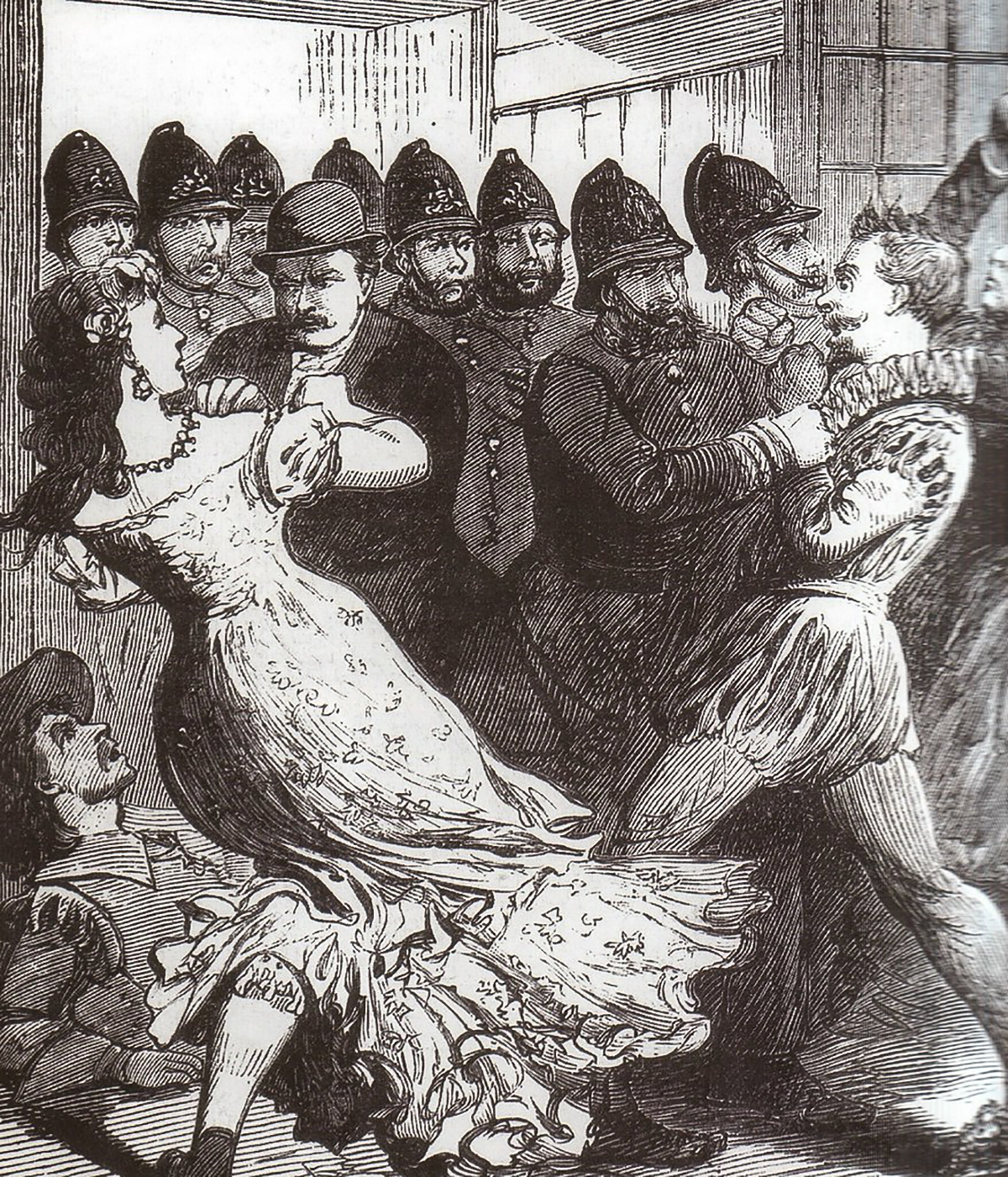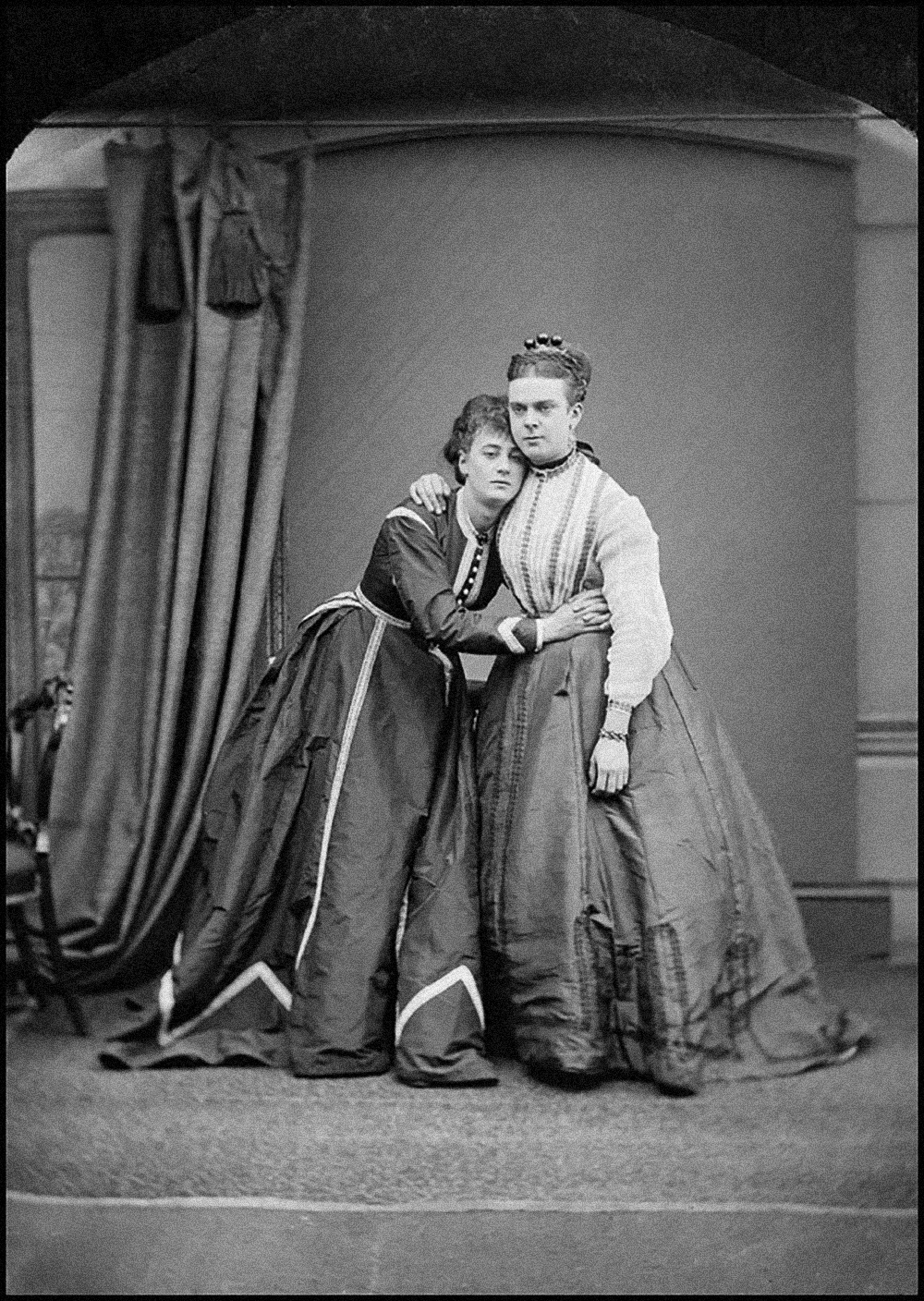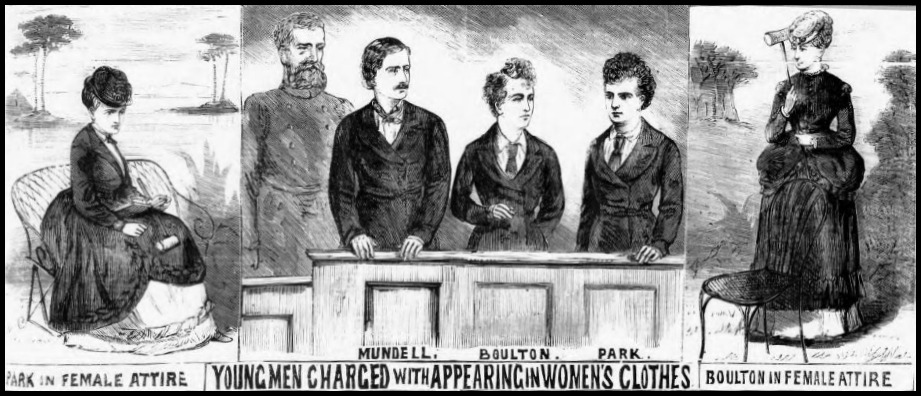Imagine this. It’s 1880 and you’ve just finished a 19-hour shift in a factory; grafting, losing fingers, probably getting slapped about by a bloke with mutton chops, and you’re on your way home and you see a massive commotion outside Hulme’s Temperance Hall.
You go to investigate (who wouldn’t?) and there’s a bunch of angry, no-nonsense coppers dragging out a cacophony of men and women – all dressed to the nines and looking fabulous.
But wait, those aren’t women – those are in fact – men dressed as women! What a scandal!
This was, in fact, the notorious Temperance Hall Drag Ball, held in Hulme in September 1880 – quite possibly the earliest and most documented cross-dressing ball in the world – and an event which helped cement Manchester’s reputation as the UK’s gay capital.
It all began when Temperance Hall, just off York Street in Hulme, was booked out by the “Pawn Brokers’ Assistants’ Association” for their annual ball. Set to kick off at around 9:30pm, the run up to the evening was spent closing the blinds on the windows, as well as carefully covering up any other windows with paper and cloth. The plan was to ensure that NOBODY could see in.
As is usually the case though, someone either got too excited or didn’t have their head in the game and a few windows were left uncovered – the ones which nobody thought anyone would be able to see through.
Earlier in the afternoon of Friday 24th September, the Chief Constable of Manchester received an anonymous tip about an event “of an immoral character”, which was due to take place that evening at Temperance Hall. He therefore dispatched Detective-Sergeant Jerome Caminada and a couple of bog-standard Bobbies to go down to check it out.
When the bizzies arrived, they found all of the windows covered but could clearly hear music coming from inside. Using a bit of ‘detective work’, they ended up standing on an outhouse – peering through one of the windows which was left uncovered. I think it’s pretty obvious by now what they saw inside.
As they watched, they saw a large group of around 50 men, all dancing and minding their own business. In fact, they were said to be having a “proper top time” at the ball, all of them looking fabulous, many dressed up as famous characters from history – including Henry VIII and Anne Boleyn, and Romeo & Juliet.
It was the 22 men who were dressed in women’s clothing that was the problem though. They were dancing Scotch Reels and doing ‘Can-Can’ style dances with each other.
The police later claimed that they could hear “chatting, screaming and feminine voices and women’s forenames used”. Detective-Sergeant Caminada also said that he could see into another room in the hall and through the shadows of the blind he saw two men “in positions which he did not care to describe.”
After watching these events unfold (for what seems like a suspiciously long time) the influential Detective-Sergeant decided enough was enough. At around 2am he attempted to enter the Hall, knocking on the front door and, naturally, not getting any reply.
After a couple of minutes of silence, he was then asked “Who’s there?”, to which he replied “Sister” – a code word he’d (suspiciously) picked up a few years prior at a similar event. The door was then quickly opened by a man wearing a nun’s habit and the coppers rushed in – batons out.
As with all raids at a party – everyone panicked and started running about all over the place. The scene was one of carnage with women’s clothing all over the place as blokes tried to shed their costumes before they were arrested.
All 47 of the men were arrested, with 19 of them still in female clothing, leaving just the musician who had been hired for the night – a blind fella who had absolutely no idea what was going on! I still like to think that this guy was in on it too – but was just really good at acting like he was blind. That’s what I’d have done.
Anyway, all the men were rounded up and shipped off to the police station for questioning, alongside a load of carriages carrying the dresses as ‘evidence’.
The trial was a farce, with the judge claiming the offences to be too “abominable” to be read out in front of the court, with the men charged with having “solicited and incited each other to commit an un-nameable offense”.
It was a mixture of curiosity, outrage and ridicule – with some of the men still kept in their female costumes to incite people’s jeers and anger even further. Eventually the whole thing collapsed in on itself – primarily due to the fact that most of the men were middle-class and were all able to shell out for barristers to represent them.
In the end the men were ordered to pay about £25 each for good behaviour for the next 12 months. If they did it again, then they would face going to prison for 3 months.
Of course, this was not the end of it – far from it. The men were then subjected to nationwide ridicule and sensationalism, with their names and details even being printed into articles for everyone to see.
Occupations, addresses and even who was wearing women’s clothing was included in newspapers across the land – meaning these men could not escape the events of that night – certainly not from their friends, family or co-workers.
Cross-dressing in the Victorian times was a basis for arrest, prosecution and ridicule, with men charged with “incitement to commit an unnatural offense.” It’s important to remember just how serious these accusations and charges were, with homosexuality prosecuted with imprisonment and hard labour, and if the case was acquitted – a man’s reputation and family would be destroyed.
Ultimately though, the events of the night were quickly forgotten as the press lost interest and the men either moved house and job or just carried on regardless. Even Detective-Sergeant Caminada failed to mention the event – and the ball was lost to the pages of time for years after.
Interest in this notorious ball was kick-started again back in the 80s when the city’s LGBT community was fighting tooth and nail against the authorities during the HIV/AIDS epidemic.
Local charity the George House Trust began their annual Drag Ball celebrating the city’s vibrant drag scene and raising money to support and empower people who are living with HIV.
Hopefully the Drag Ball 2021 can go ahead this year – head on over to the George House Trust website for more information on what they do…









